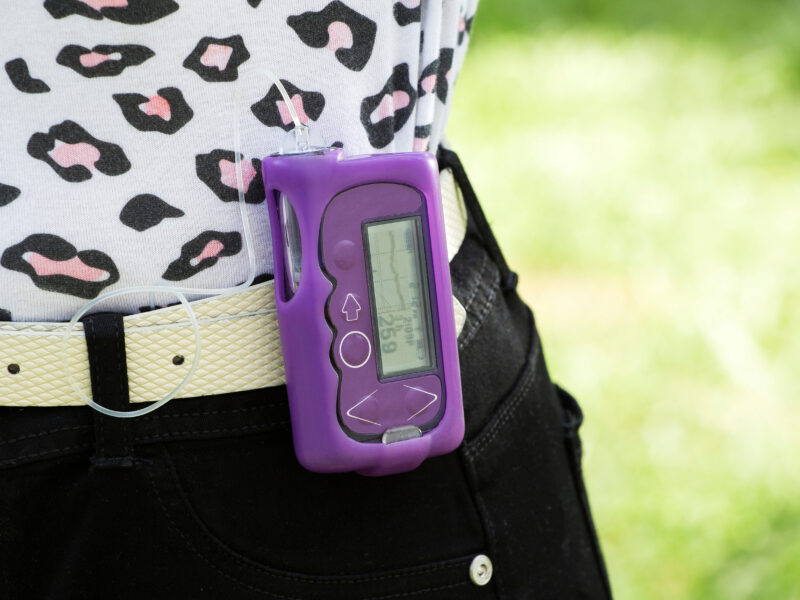Diabetes Distress Associated With Poor Glycemic Control in Adolescents With Diabetes
Diabetes Distress Associated With Poor Glycemic Control in Adolescents With Diabetes https://pediatricsnationwide.org/wp-content/uploads/2021/03/138017387-1024x683.jpg 1024 683 Mary Bates, PhD Mary Bates, PhD https://secure.gravatar.com/avatar/c6233ca2b7754ab7c4c820e14eb518c8?s=96&d=mm&r=g- July 26, 2021
- Mary Bates, PhD

Screening for diabetes distress, in addition to depression, could benefit adolescents with diabetes.
Adolescents with type 1 diabetes are more likely to experience depression than their peers without diabetes, and symptoms of depression can directly impact adherence to diabetes care. Thus, both the American Diabetes Association and International Society for Pediatric and Adolescent Diabetes recommend annual routine depression screening.
Recently, diabetes distress has emerged as a way to describe negative reactions and emotions stemming from having a diabetes diagnosis.
“Diabetes is probably the most involved disease a patient can have,” says Robert Hoffman, MD, a member of the Section of Endocrinology and Metabolism at Nationwide Children’s Hospital.
“Other diseases can make you feel worse or can be potentially more life-threatening, but none of them demand as much work from the patient as diabetes.”
Dr. Hoffman and colleagues conducted a study to determine whether diabetes distress or depression screening better predicted increased hemoglobin A1c (HbA1c) in adolescents, and also to assess interactions with factors including race, sex and socioeconomic status. The researchers used validated, self-administered tests for depression (PHQ-9) and diabetes distress (PAID-T) from over 300 adolescent patients with type 1 diabetes.
They found that both depression and diabetes distress were associated with increased HbA1c; however, diabetes distress was more strongly correlated with HbA1c scores than depression.
Additional analyses revealed higher diabetes distress and depression scores in females compared to males and in adolescents with public insurance compared to those with private insurance.
“Even though guidelines recommend screening for depression annually, I feel that screening for diabetes distress could also help guide us clinically,” says Ming Chan Hong, MSW, LISW-S, Endocrinology Social Work Clinical Leader at Nationwide Children’s and a co-author of the study. “This study shows that both are important.”
The researchers say that before diabetes distress screening is fully incorporated into annual exams for adolescents with diabetes, specific interventions need to be developed.
“What are the ways we can take the burden off of these patients so they feel less stressed?” says Dr. Hoffman, who is also a professor of pediatrics at The Ohio State University College of Medicine. “Should the intervention be educational, or mental health-based, or involve their parents?”
Ms. Hong agrees that the validated screening tool for diabetes is distress is useful, but there are limited evidence-based guidelines for what kind of interventions work for particular symptoms.
“Right now, there is nothing in the research to say if a patient has this score, and endorses these particular statements, this will be the validated intervention we can use that will work and improve diabetes control,” says Ms. Hong.
“We are not there yet. In the future, when we decide to initiate diabetes distress screening, I would like to see attention paid to evaluating different interventions that are recommended in response to diabetes distress.”
Reference:
Hong KMC, Glick BA, Kamboj MK, Hoffman RP. Glycemic control, depression, diabetes distress among adolescents with type 1 diabetes: effects of sex, race, insurance, and obesity. Acta Diabetology. 2021 Jul 2. doi: 10.1007/s00592-021-01768-w. Epub ahead of print.
Image credit: Adobe Stock
About the author
Mary a freelance science writer and blogger based in Boston. Her favorite topics include biology, psychology, neuroscience, ecology, and animal behavior. She has a BA in Biology-Psychology with a minor in English from Skidmore College in Saratoga Springs, NY, and a PhD from Brown University, where she researched bat echolocation and bullfrog chorusing.
-
Mary Bates, PhDhttps://pediatricsnationwide.org/author/mary-bates-phd/December 27, 2016
-
Mary Bates, PhDhttps://pediatricsnationwide.org/author/mary-bates-phd/
-
Mary Bates, PhDhttps://pediatricsnationwide.org/author/mary-bates-phd/
-
Mary Bates, PhDhttps://pediatricsnationwide.org/author/mary-bates-phd/
- Post Tags:
- Depression
- Diabetes
- Endocrinology






